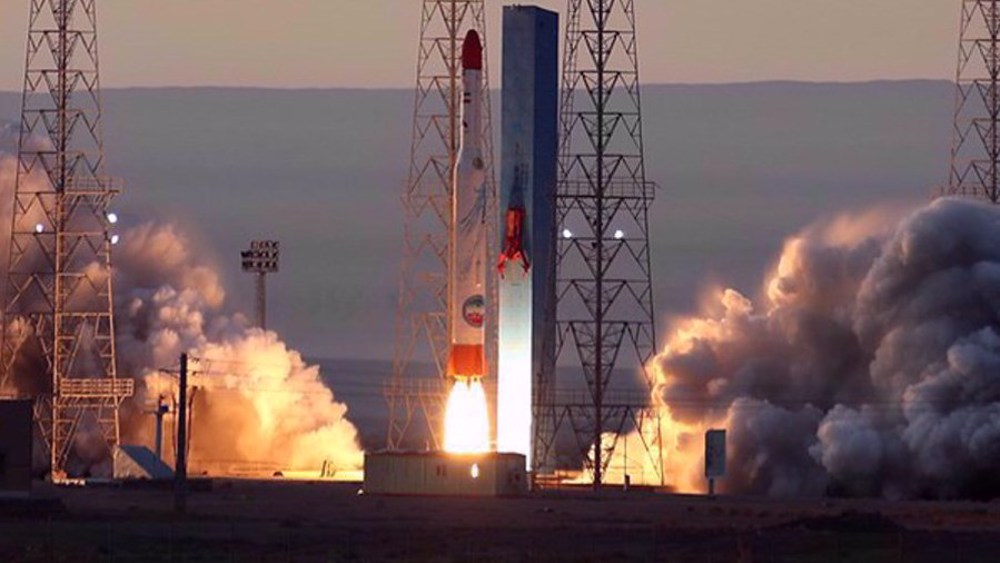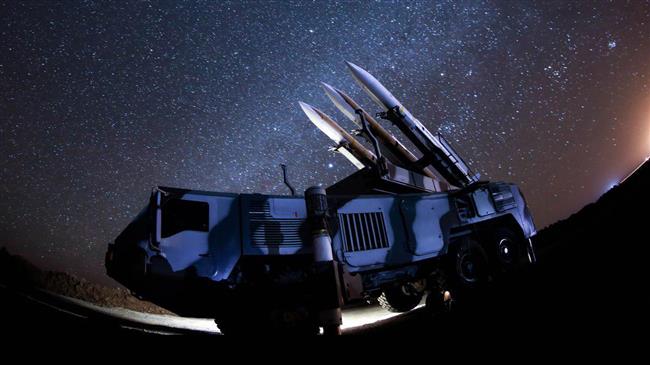Iran downing of sophisticated drone to hurt US 'quite a lot'
Military experts say the loss of the RQ-4A Global Hawk will hurt the US “quite a lot”, marking the first known instance of the workhorse drone being shot down in its nearly 18-year operational history.
Iran’s Thursday downing of the unmanned reconnaissance aircraft which was developed to evade the very surface-to-air missiles used to shoot it surprised Pentagon officials, the New York Times said.
“This isn’t a throwaway drone whose loss the US will just shrug off,” said Ulrike Franke, a drone expert with the European Council on Foreign Relations, who described the RQ-4A as a flying “data hoover.”
It’s not just the price tag that makes the loss of this drone a big deal. The drone is designed to be harder to hit, she said, because it flies at altitudes beyond the reach of many air defense systems.
"Drones commonly refer to the small, unmanned aerial vehicles seen crisscrossing local skies — but the US military’s RQ-4A Global Hawk shot down by Iran bears little resemblance to its buzzing brethren," the New York Post said.
The aircraft costs a whopping $123 million apiece — about $34 million more than Lockheed Martin’s F-35A Lightning II, the Pentagon’s next-generation stealth fighter jets, according to Military.com, which cited Pentagon documents.
According to analysis by the Government Accountability Office, Global Hawks have at times cost the US more than $220 million to manufacture and equip.
The 47-foot-long, jet-powered RQ-4A has a wingspan of about 130 feet — more than a Boeing 737 — and can fly at altitudes of about 65,000 feet for longer than 24 hours while packed with sophisticated sensors.
The RQ-4A has amassed over 250,000 flight hours and has flown in support of US missions in Iraq, Afghanistan, North Africa and the Asia-Pacific region, the New York Post said, citing its maker Northrop Grumman.
Carrying multiple sensor payloads, the drone “is designed to gather near-real-time, high-resolution imagery of large areas of land in all types of weather — day or night,” according to Northrop.
Franke said the size and expense of the Global Hawk makes it a significant loss. “This drone was specifically designed to be largely invulnerable — because it flies so extremely high,” she said.
Some Global Hawks are deployed to Al Dahfra Air Base in the United Arab Emirates. They have been used extensively in the Persian Gulf, relying on a suite of high-end electronic sensors and other intelligence-gathering systems to peer into other countries.
"There's a lot going on here, and we're probably only seeing some of it," said Thomas Karako, director of the Missile Defense Project at the Center for Strategic and International Studies.
Franke said the US military custom-outfits different vehicles for different missions, making it uncertain what exact equipment this particular Global Hawk carried.
"There could always be super secret spy tech onboard that we don’t know about," she said of the downed aircraft which is used by both the US Air Force and the US Navy.
Iran's Foreign Minister Mohammad Javad Zarif said parts of the drone have been recovered as he brushed aside US claims that the aircraft way flying in international airspace.




Iran memorably captured a US RQ-170 Sentinel drone in December 2011 and later reverse-engineered the vehicle's hardware and software to copy its technology. Sentinel drones are thought to use stealth technology for inconspicuous aerial reconnaissance.
Iran said the IRGC shot down the US drone with an upgraded Khordad missile-defense system, which can detect and track targets 95 miles away and down them at a distance of 30 miles. The system can target enemy aircraft flying as high as 81,000 feet, or roughly 15 miles.
The RQ-4A Global Hawk "flies at a very high altitude, so the fact that the Iranians were able to shoot it down shows that they have some pretty significant capabilities," Amy Zegart, a senior fellow at the Hoover Institution and Stanford University’s Freeman Spogli Institute of International Studies, said.
"In some ways, the shoot-down is a signaling mechanism to the United States that Iran is more capable than we might have assumed,” she said.

Trump's war rhetoric against Iran to impose heavy costs on US and allies: Analyst

US announces new sanctions targeting Iran’s drone program

Iran to inaugurate second phase of Chabahar spaceport
‘Full-blown crisis’: Gaza municipality warns as Israel cuts 70% of water supply
Italians against ReArm Europe
Trump's war rhetoric against Iran to impose heavy costs on US and allies: Analyst
United in defense: Iranian civil activists warn US against war
Yemen conducts fresh operation against US warships in Red Sea
VIDEO | ‘Hands off!’ rallies sweep across US: Thousands assail Trump and Musk
VIDEO | Tens of thousands stage protest against EU's rearmament plan in Rome
VIDEO | Israel plans to erase Palestinian refugee camps, right to return











 This makes it easy to access the Press TV website
This makes it easy to access the Press TV website